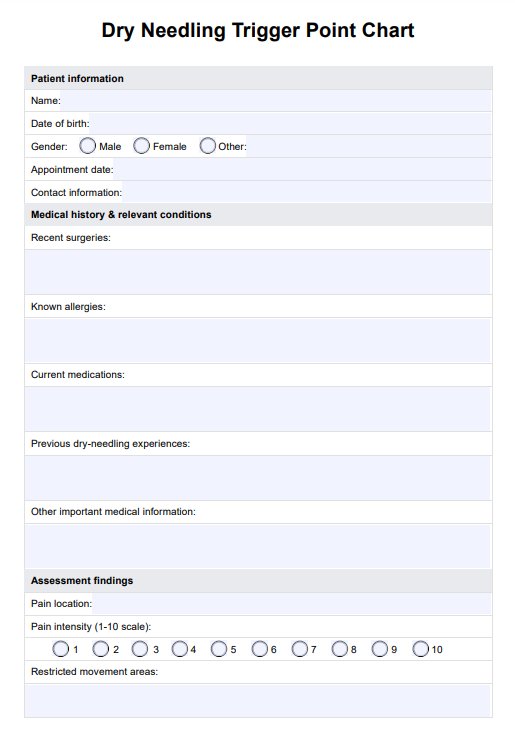The Dry Needling Trigger Point Chart is a valuable resource that helps practitioners accurately locate and treat muscle trigger points. It highlights muscle knots and their associated pain patterns, such as neck pain or referred pain in the legs or head, enabling targeted and effective treatment.

Dry Needling Trigger Point Charts
Explore the Dry Needling Trigger Point Chart with Carepatron, a comprehensive tool for precise trigger point targeting and optimal patient care.
Dry Needling Trigger Point Charts Template
Commonly asked questions
The Dry Needling Trigger Point Chart is commonly used by physical therapists, physicians, and other healthcare professionals trained in trigger point dry needling. It serves as a visual reference to identify trigger points across different muscles and areas of the body, such as the neck, leg, or head.
Trigger point dry needling should be considered for pain treatment when patients experience persistent or chronic muscle tension that hasn’t improved with other interventions such as stretching, massage, or physical therapy. This technique targets tight muscle fibers and knots, helping to relieve pain by improving blood flow and reducing muscle tension. Using tools like the dry needling diagram, healthcare providers can accurately identify trigger points and enhance treatment precision.
EHR and practice management software
Get started for free
*No credit card required
Free
$0/usd
Unlimited clients
Telehealth
1GB of storage
Client portal text
Automated billing and online payments











